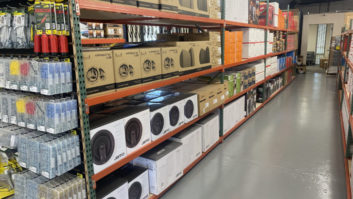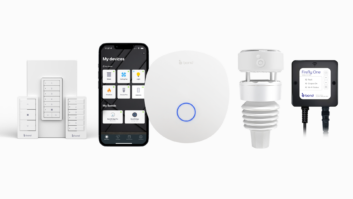The 2008 notebook and desktop PC market will be Sybil-like with each company trying myriad ideas to see what sticks with consumers.
This will be particularly true in the notebook market where various vendors will try for the first time or expand upon features like WiMAX, highdefinition optical drives, flash-based hard drives, encrypted hard drives and high-end graphics cards.
While additions on the desktop side are not as diverse, what will happen is an attempt to remake the category focusing on the all-in-one form factor. This is not new; Apple broke ground with the iMac years ago, but this time around manufacturers want to use the industrial design to bring the PC into different places in the home — primarily the kitchen, bedroom and dormitory (see box).
The one trend that spanned most of the laptop industry last year, and is expected to continue to do so, is personalization.
With the laptop truly being used as a mobile device by consumers and thus ending up in public venues ranging from coffee shops to parks, people want to be seen with a computer that matches their style and personality. Starting last year, this cropped up with many of the major vendors, and this fashion statement will spread in 2008.
“Since a notebook is personal in nature, people want their notebook to be as personalized as possible,” said Mike Abrary, Sony’s Vaio product marketing VP.
In 2007 Sony greatly expanded its personalization offerings by giving their direct customers the option of having something engraved onto the notebook’s case. The company also offered a variety of colors and even a limited-run series based on the artwork of artist Maya Hayuk.
Abrary said this could be taken to the next level in 2008 with the company now kicking around the idea of holding a design contest where end users would submit their design and the company could either hold a contest and choose the best to include in the Vaio line, or it might even take personalization to the next level and allow individuals to include a design when they put together their configure-to-order notebook. However, Abrary tempered this by saying implementing this idea would depend on whether it could be handled by the factory, he said.
In addition to giving people something more than a silver or gray plastic slab, the best part of the personalization trend for vendors is the premium price these models demand — consumers are snatching them up regardless.
Hewlett-Packard and Gateway are also high on offering off-beat notebook designs, with HP including a variety of textured designs in the 2007 line, but others like Lenovo and Toshiba are not yet involved.
Clain Anderson, Lenovo’s innovation and thinkvantage director, said people are very accustomed to the basic-black look of a Lenovo Thinkpad, while Toshiba’s Chris Caspar, product marketing group manager, said the company offered different design ideas a few years ago, but has since dropped it.
“We must have been ahead of our time, but we are looking at it again,” Caspar said, adding it was too early to tell if Toshiba would jump back into this particular game.
On the technical side, HD DVD and Blu-ray Disc (BD) will play increasingly larger roles in 2008.
Toshiba, the major HD DVD backer, has introduced a rewritable HD DVD drive in its latest Qosmio notebook and the company will push the technology down into its mainstream Satellite line later this year, Caspar said.
Sony will increase the number of SKUs carrying Blu-ray in 2008, said Abrary, with four to five models equipped with read-only versions in 2008. The company rolled out two such models last year. Sony will not introduce a BD burner into the market anytime soon, as the extra cost makes it prohibitively expensive, and Abrary said there has been little consumer interest in a BD burner.
Gateway’s official position is that it’s platform agnostic when it comes to the BD/HD DVD debate, but it will introduce HD DVD-ROM notebooks this year primarily to help keep costs down, said Todd Titera, Gateway’s mobile products senior manager.
However, the company is really pinning its hopes on the hybrid drives that are slowly becoming available. Gateway already has one hybrid-equipped notebook on the market.
One potential feature that has generated a lot of talk, but little actual action in the notebook category, is WiMAX. Many vendors mentioned that this cellular-based broadband delivery system has the potential to become a feature in notebooks, but due to some of its limitations, only Lenovo said it will actually move on the technology.
The problems cited with WiMAX were its limited availability nationwide and that it is only backed by Sprint. However, it was spoken highly of as a future method of receiving the Internet while on the go.
Another technology gaining traction is solid-state drives (SSD), despite a high price premium that can add as much as $400 to a notebook cost.
Sony plans to expand its SSD selection into its TZ line this year, Abrary said, adding that there is a great deal of interest in these models regardless of cost.
“These are big in business, the government and military right now, but as costs come down it will become more available,” he said, adding flash prices could drop as much as 15 percent in 2008 due to increased production capacity.
Toshiba has one SSD model, the Portege R500, but Lenovo’s Caspar thinks pricing has a far way to go before it can become a big player on the consumer side.
Lenovo is looking at another type of technology for computer storage — fully encrypted hard disk drives, said Anderson. These are available from the company as an option and he expects the feature to take off in 2008.
While other companies are also offering these drives, Anderson said Lenovo is taking the level of security provided to an extra level by not leaving a backdoor in the security system.
Wireless broadband connectivity is another area of interest with WiMAX and 802.11n both finding their way into the market. The latter Wi-Fi-ready systems are already on the market in small numbers, but this will quickly shift in 2008 as Intel ships more processors with embedded 11n capability.
Whether or not WiMAX takes off is another matter. The service is to be offered in conjunction with Sprint.













